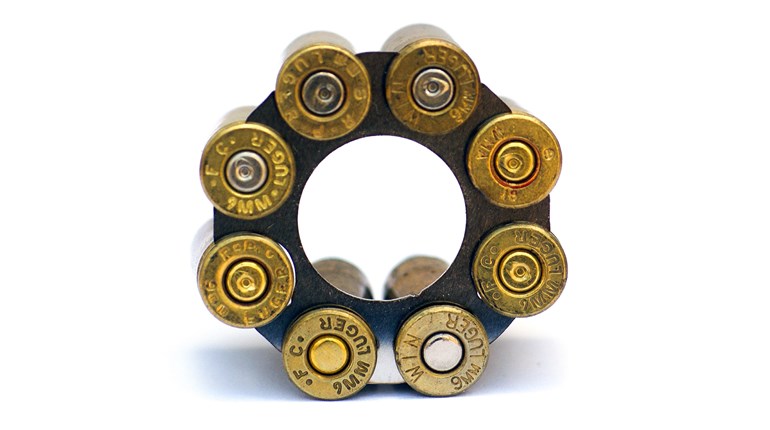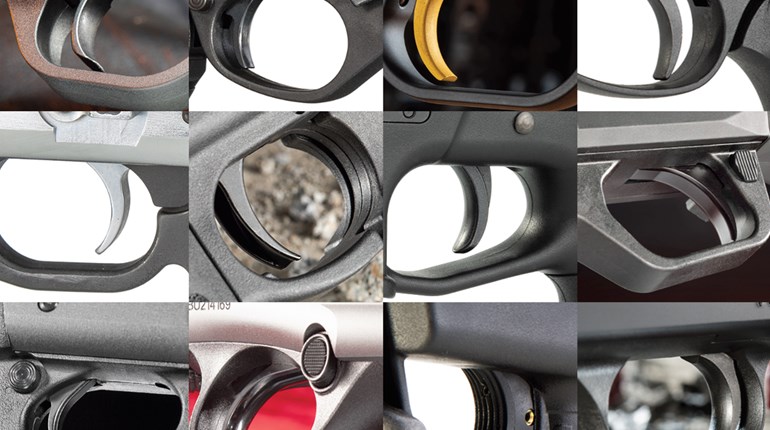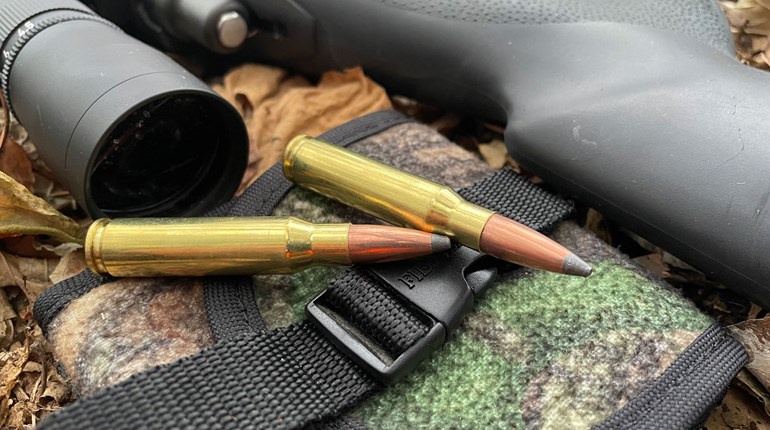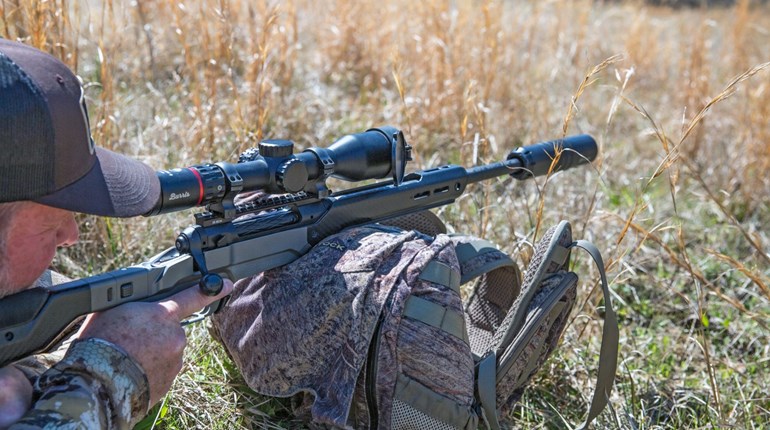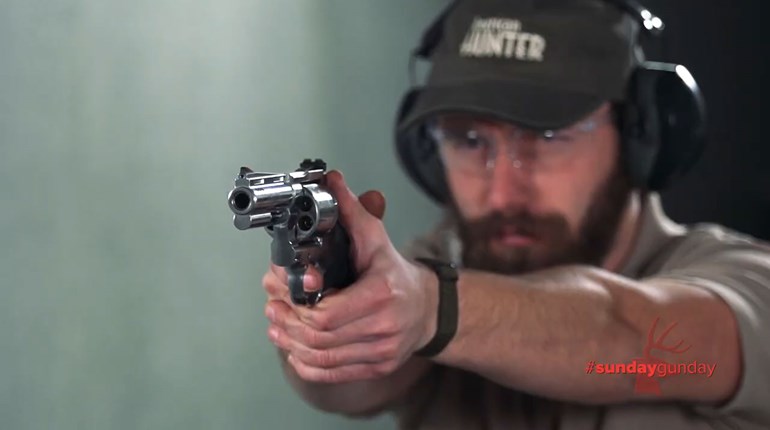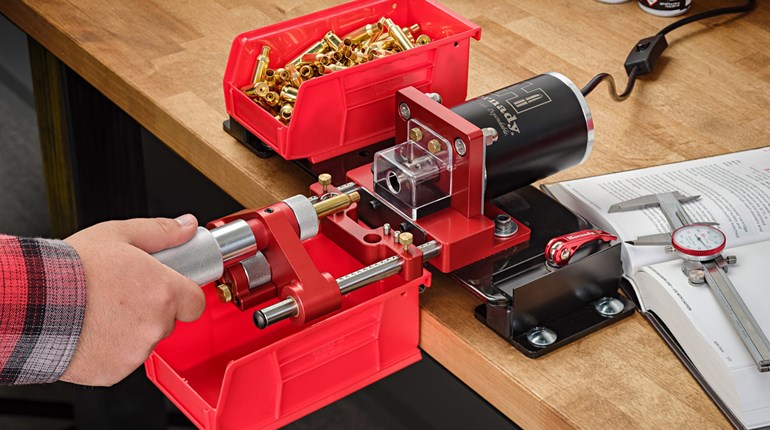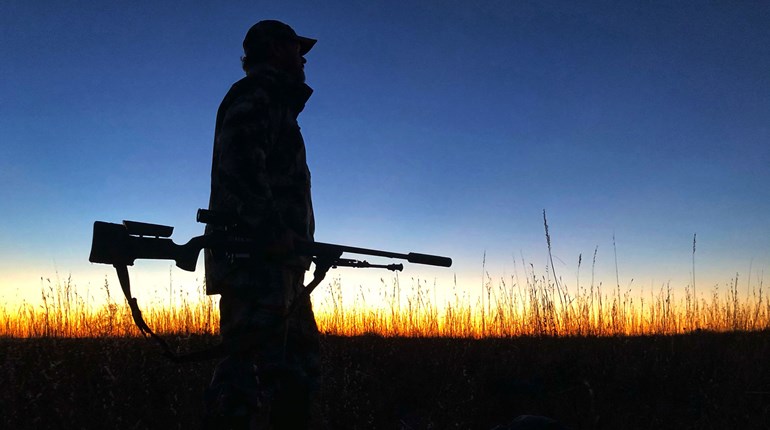
It could be that last-second glimpse of a flock of Canada geese with cupped wings over well-set dekes at sunrise, or a faithful German Shorthaired Pointer posing statuesque on a Georgia plantation. Maybe it’s the revealing cackle of a mature South Dakota pheasant taking flight from a frost-laden CRP field. Or, perhaps it’s the swift wingbeats of a ruffed grouse erupting from amongst the mountain laurel, hurried in its attempt to evade danger. The list is ceaseless.

At least one of the above scenarios invoked a memory, didn’t it? And now, your mind is beginning to wander. Destination? Your favorite wingshooting fixation. Well, pull yourself together. It’s time to work. You read that right. Rather than sulk on the sofa or sip cheap coffee and stare down memory lane, it’s time to act. As former Navy S.E.A.L., author, and podcaster Jocko Willink opined, “You already know what the right thing to do is … You just gotta do it.” So, grab your trusty wingshooting scattergun and head to the shotgun range.
Identifying the Why
Few firearms pursuits are as challenging as wingshooting; after all, the quarry you seek is on the move—sometimes at astonishing speeds. This isn’t news, even to the novice. But, making the not-so-obvious correlation between proficiency with one’s shotgun and hunting ethics—not to mention, success—often evades wingshooters.

Let’s test this notion. First, honestly answer the following question: “How much time and effort did I dedicate to practicing with my shotgun before hunting season last year?” Now consider the implications. Reflect on the number of kills, cripples (and lost) and misses. Tough to think about, huh? Own the outcomes. No excuses. Move forward.

Shooting is a perishable skill; stop temporarily and you’ll lose your edge—guaranteed. Why do you think top-tier competitors, Special Operations Forces, and other elite shooters train incessantly? It’s essential. You must do so, too. Moreover, your practice must be consistent—discipline required—and with purpose; it’s not for entertainment, though the clay shooting sports are pleasurable. You’re preprogramming your body and mind, so in the field your subconscious mind will usurp the conscious mind, and automaticity will control your actions. How? Practice.
What follows is an overview of how to use the clays sports to improve your wingshooting skillset. Settle on what best fits your schedule, budget, preferences, and hunting style and quarry; however, create and adhere to a plan.

Gearing Up
Although the wingshooter’s shotgun shouldn’t be “stored” post-season—rather, it should be “used” regularly—ensure that it’s functional and safe before beginning a clay shooting regiment; few things derail progress as much as does an untrustworthy shotgun. The firearm should be field stripped and cleaned per the manufacturer’s instructions. If you’re uncomfortable performing this task, seek the services of a trustworthy gunsmith to do it in your stead. While inspecting the shotgun, take note of the choke tube(s). Typically, new clay shooters use too much choke. Outside of trap, which requires a “tight” choke, such as improved-modified (IM) or full (F), most clay games can be shot with a modified (M) or one with less constriction. Frankly, improved-cylinder (IC) and light-modified (LM) are popular due to their across-the-board usefulness. I prefer the latter for all but the furthest targets. Also note that the constriction of a given choke differs for lead-alloy and steel shot.

Once the shotgun is ready, it’s time to empty the field—or waterfowling—bag. Calls are unnecessary for clay targets; they won’t respond, and you’ll look suspect. Joking aside, you want to ensure that you don’t run afoul of a range’s guidelines for shot size and/or material, or the shell’s velocity. Each facility sets its own rules, but most prohibit lead-alloy shot larger than No. 7½. Permissible steel shot is usually a tad larger. However, some don’t permit the use of lead-alloy shot at all, while others prohibit steel pellets. Confusing, I know. Also, at times ranges set maximum velocities for shotshells. As an example, the facility I frequent most has an upper limit of 1,300 fps (and no steel shot, to boot). Again, it’s best to contact the individual range to ensure compliance. Concerning velocities, anything in excess of 1,250 fps is unnecessary, and even 1,200 fps is plenty of speed.

Like metallic cartridges, shotshells can be had in both economy or “promo,” and premium loadings. The former is appropriate for practice and distances out to 40 yards, give or take, while the high-antimony “magnum” shot of the latter provides denser patterns and increased reach. It’s best employed in leagues and tournaments. Save the extra money on additional targets, range time, and/or professional instruction.

When it comes to payload, more isn’t necessarily better—in fact, it can be counterproductive. Case in point: whereas a 1 1/8-ounce load of magnum, lead-alloy No. 7½ shot has a noteworthy increase in pellets—394 vs. 350—over 1 ounce of the same shot, the jump in felt recoil is obvious and over time fatiguing. I now use 1-ounce 12-gauge loads almost exclusively; at any sane distance—and even beyond that—they’ll convincingly break targets.

If you own a semi-automatic shotgun, ensure that the shotshells you select meets the firearm manufacturer’s recommendations to ensure reliable functioning. Otherwise, you’ll have a fancy, over-complicated single-shot shotgun that’s no better than an economical, break-open version.
You’ll also want to have a shotgun (clay shooting) vest or shell pouch to keep your ammunition easily accessible. Cost is inconsequential.

Lastly, as season approaches—along with cooling temperatures—consider practicing while wearing the wingshooting vest or jacket you’ll wear when afield. Any outerwear will affect shouldering the shotgun. If you’re like me and start with a low gun (then raise it for the shot), you’re more likely to snag thicker, mid- to late-season clothing. Practice now to avoid issues in the future.
Match the Hunt
Flyfishermen frequently use the adage, “match the hatch,” to stress the importance of his/her fly resembling the fish’s current diet. The same logic applies to hunters on the clay course. Match the hunt. Clay sports encompass multiple “games,” and each is detailed below. While it’s important to practice those presentations you’ll encounter afield, such as American trap or wobble for the pheasant hunter, I don’t recommend practicing only a single one. The best shotgunners are those individuals who regularly test themselves on all the various games. Versatility is good.

American Trap
This game is best suited for those who pursue pheasants or enjoy jump-shooting waterfowl. Why? Because all trap targets—standard 4¼-inch clays thrown at 42 mph—will be going-away shots at a variety of angles and heights. This format of trap (as opposed to “international” trap) features a single, oscillating (side to side and back) thrower below the ground either 16 or 27 yards in front of the shooter. Sixteen yards makes the most sense for ethical hunting shots. The shooter will fire from five positions, taking five shots at each. Targets can be thrown as singles or doubles. I recommend singles, as they better replicate a flushing pheasant or duck. Usually trap is shot with the shotgun pre-mounted (or shouldered); however, with practice you can become proficient from the low-gun hold. Since the clays are engaged at mid to long range, opt for magnum No. 7½ shot (lead-alloy), or the largest option in steel. While the 20-gauge is capable of handling trap, the 12-gauge is a much better choice.

Wobble Trap
Wobble trap—or “wobble”—is similar to American trap in that the clays are going away at various angles and there are five stations. However, the similarities end there. The stations are situated on a pyramid-shaped platform, with the throwers—yes plural—on ground level beneath the center position. Therefore, the standard 4¼” targets appear to be flushing, albeit at a greater range of angles and heights than American trap. Randomness is guaranteed. At each station you’ll shoot a single (one shot permitted), followed by a report pair. The final pair can be report or simultaneous (thrown concurrently). Leagues generally use the latter. The advantage of rising targets is obvious; however, you’ll also have some nearer to the ground, so it can be good practice for shooting gamebirds slightly downhill. As with American trap, I prefer magnum No. 7½ lead-alloy shot—particularly for simultaneous pairs. But No. 8s will suffice, provided that shot distances are reasonable. I use LM and IM chokes in my over-under, but a run-of-the-mill Modified is plenty. Like trap, the 12-gauge really shines in wobble. That being said, I’ve witnessed several shotgunners work magic with 20- and 16-gauge shotguns. The 28 would be fine, too.

American Skeet
Want to become more skilled on crossing and angling shots? Try American skeet. Skeet is a game of established, consistent distances, speeds and angles, but scoring well requires solid technique and muscle memory—the same qualities necessary for hitting unpredictable gamebirds on the wing. The skeet field is a half-circle in shape, with eight stations on the outside edge. The last station is at the open portion of the half-circle, directly between the “high house” (left) and “low house” (right). Stations 1, 2, 6 and 7 require the participant to attempt a single 4¼-inch “bird” from each house, followed by a simultaneous pair. Single clays from each house are also engaged at stations 3, 4, 5 and 8. The 25th shot is taken at the first miss or at the low house at station 8.
Despite the launchers being fixed and constant from target-to-target, the angles and required leads change as you progress around the field. Establishing a solid foundation on angling and crossing targets is paramount to most wingshooting pursuits, so every shotgunner should spend considerable time on the skeet field. Since the distances are relatively short, skeet is good practice for all gauges (and .410 bore). As for appropriate shot sizes, most ardent skeet shooters use No. 9, 8½, or 8s, though 7½s are equally good. In fact, my first “25 straight” was accomplished using a 12-gauge, 1-oz. load featuring No. 7½ shot. Skeet, IC, and LM are all appropriate choke constrictions for skeet. Want a challenge? Go tighter.

Five-Stand
If you’re seeking more lifelike targets, opt for five-stand. True to its name, five-stand has, well, five stands or stations, with each having a “menu” denoting the targets to be shot there. No two are alike. The number of throwers depends on the site, but in excess of a dozen isn’t uncommon. The variety of target types and presentations is bewildering. In addition to the standard, 4¼-inch dome target, expect to see its more stoutly constructed “rabbit” counterpart, among others. As for appearances, you can realistically expect to see “springing teal,” bounding rabbits, chandelle (full-face arching), overhead, fleeing birds, and all manner of angling, incoming, and crossing targets. At each station you’ll shoot a single (some facilities permit two shells to be fired, while others only permit one), followed by report and simultaneous pairs. Once all group members have finished at a station, you move to the next. Because the angles and speeds of the clays differ, as well as your position, five-stand is a perfect for wingshooting practice.

If only one shell can be fired at singles, a 25-count box is sufficient; however, upward of 30 shells will be needed when two shots are permitted. Number 8s and 7½s are good shot sizes for five-stand, but the latter gives additional range on outgoing targets. All gauges (and .410 bore) can be used for the game, but some shots can be beyond the effective range of the smallest sub-gauges. Better to learn here than in the field, right? An IC, LM, or modified choke will serve well for all five-stand presentations.

Sporting Clays/FITASC
Although five-stand increases target diversity over American trap and skeet, as well as wobble, the throwers are still fixed in position. Such is not the case with sporting clays. Created to replicate hunting, which it does in spades, a typical course will have 12 to 15 stations, with each one having multiple moveable machines. Crafty target setters can use the terrain and flora, along with light/shadows and thrower speeds and angles to challenge even the best shotgunners. Hence why 100s in sporting clays are rare. What’s more, you’ll be exposed to targets ranging from the “mini” (60 mm/2 3/8 inches) and “midi” (90 mm/3½ inches) to the thin battue (110 mm/about 4 3/8 inches), among others. And of course, the unpredictable rabbits. Smart facilities change their courses frequently, and every range is different. Unpredictability and challenge are the main allures.

Every wingshooter will benefit from time spent on sporting clays courses. You’ll build automaticity through engaging all manner of presentations, such as bolting bunnies and springing teal, both of which will be standing or full face. Also expect to see slow, close, angling “minis” that will handily deceive all but the most-accomplished clays shooters; so too will pairs thrown at wildly differing speeds. And this is just the beginning. You’ll quickly learn to “read” clays and how to best break them. If you’re traveling to various venues and enjoy the challenge of sporting clays, consider joining the National Sporting Clays Association (NSCA) and compete in registered tournaments. With success comes trophies, cash prizes, “punches” (to move up in class) and a sense of accomplishment, all while preparing for hunting season.

Similar to sporting clays is Federation Internationale de Tir Aux Sportives de Chasse (FITASC), an activity which originated in France and most closely resembles hunting; in fact, its rules specify that the targets must be realistic. Beyond detailed policies for target setting, so too are there strict rules for participants. As an example, for 12-gauge events the shotshells must contain 1 ounce or less of shot. Shells are randomly checked for compliance. Moreover, the shotgun cannot be raised to shoot until the target is visible, not at the sound of the launcher sending the clay downrange. Until that time, the highest portion of the buttstock must be beneath a line 25 cm from the top of the shoulder, and the butt must be touching the body. Seems onerous, right? It’s not, and learning to shoot from the low-gun position has improved my abilities on the shotgun course and in the field. I won’t revert to the pre-mounted style.

Whereas sporting clays has stations, FITASC has parcours. Each will have three pegs. At each peg there is a hula hoop in which you’ll stand while engaging clays, as well as a menu of the targets. Singles will be shot first, and two shots are permitted for each. Doesn’t matter if you break the clay on first or second shot. After the group finished singles, doubles (report and/or simultaneous pairs) will be completed. The shooters then move to the next peg. FITASC events are scored by a certified referee and strictly follow a schedule. I revere this format—there is no waiting for an agonizingly slow group ahead of yours to finish, as is often the case in sporting clays. And, the ability to shoot twice at singles is more consistent with wingshooting.

Both sporting clays and FITASC events will have challenging distant targets—especially the former. Therefore, No. 7½s are the best all-around choice, though some competitors like 8s. I prefer the former. Notice a trend here? Keep it simple. As for gauge, some FITASC and sporting clays events are gauge specific, thereby limiting your decision. The 12-gauge, if permissible, is still the best choice. Match your choke(s) to the targets; go tighter for distant targets or more open for closer ones. Or, do as most professionals do; pick one in the mid-range and stick to it. Only through practice will you discover what works best for you and your shotgun.

According to Willinik, “There is no shortcut. There is no hack. There is only one way. So get after it.” I concur. And by putting in the effort now, you’ll be better prepared to create new memories come fall.













